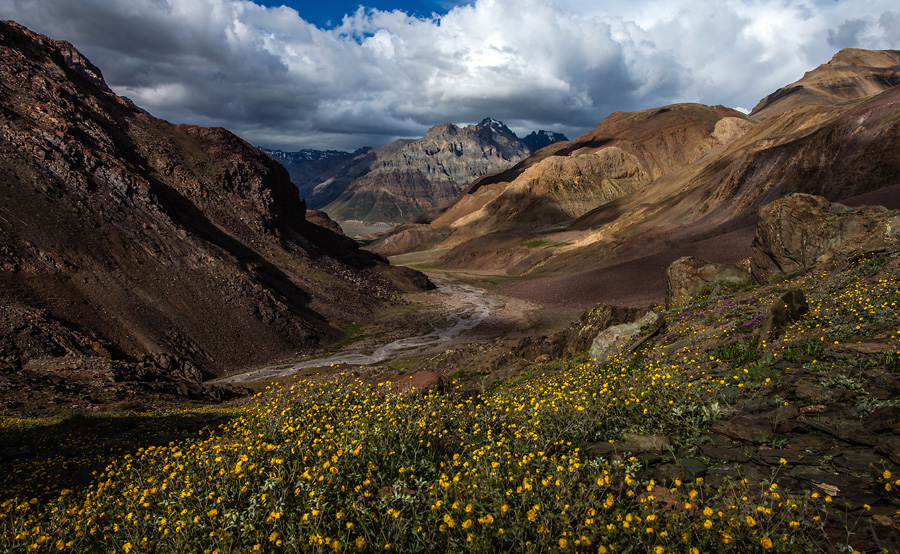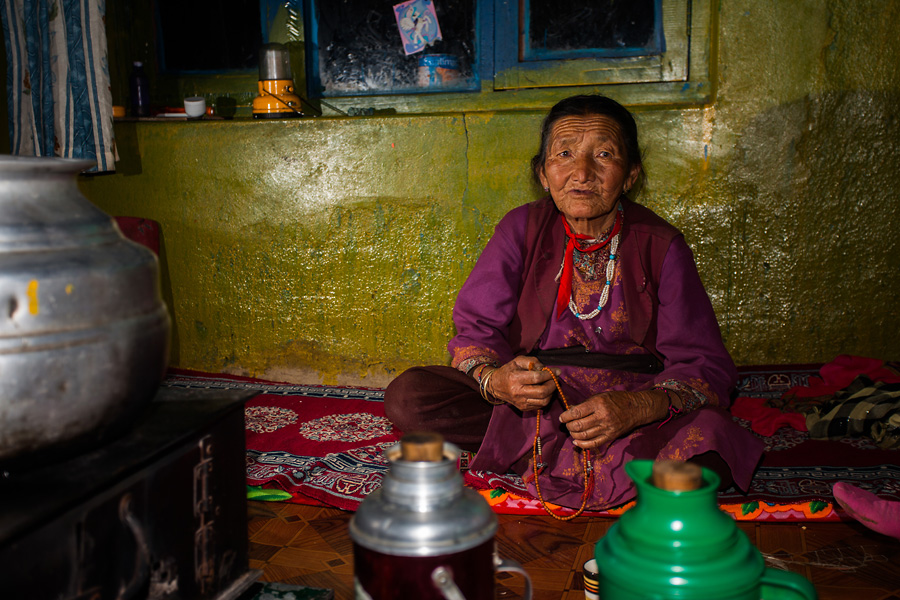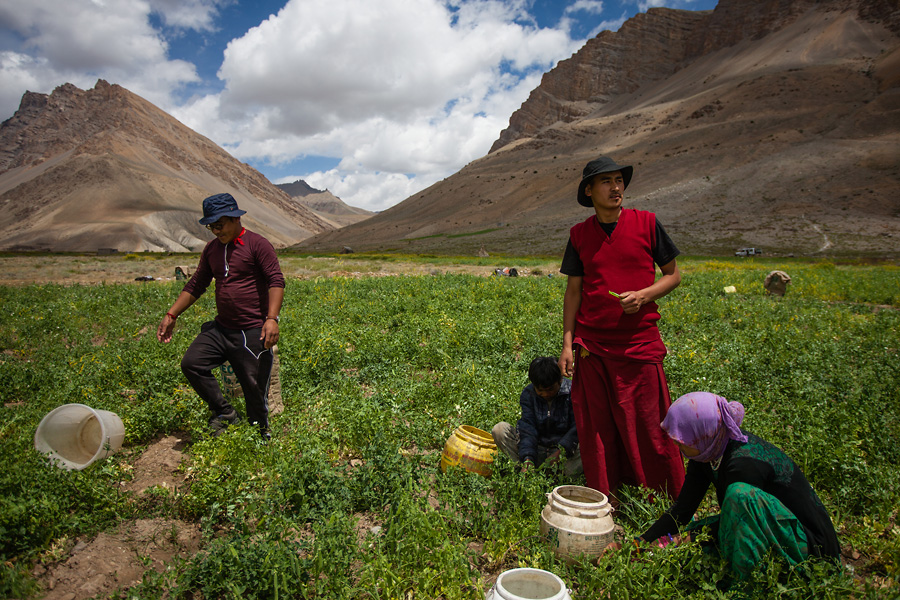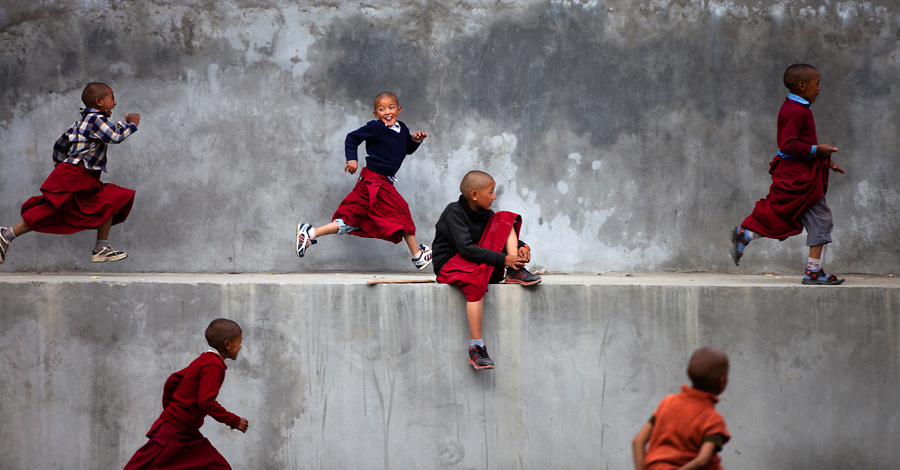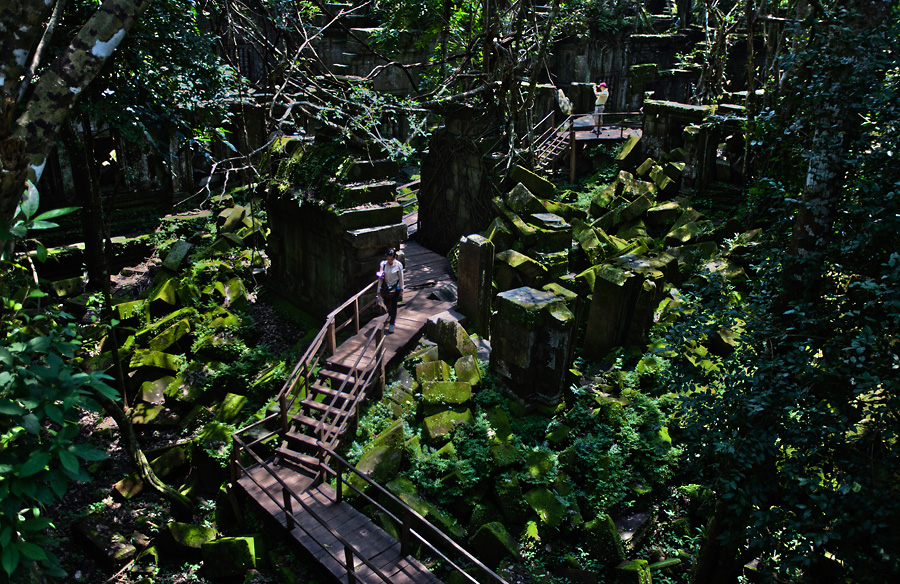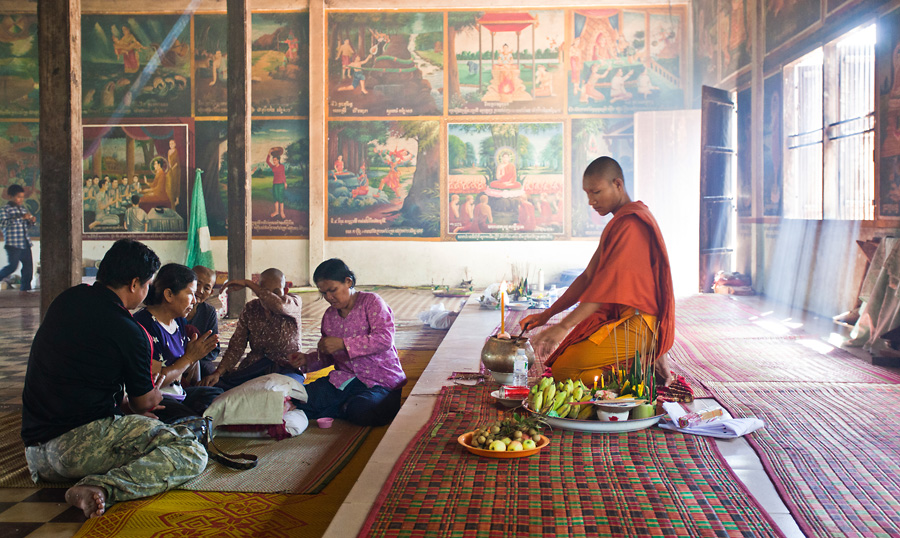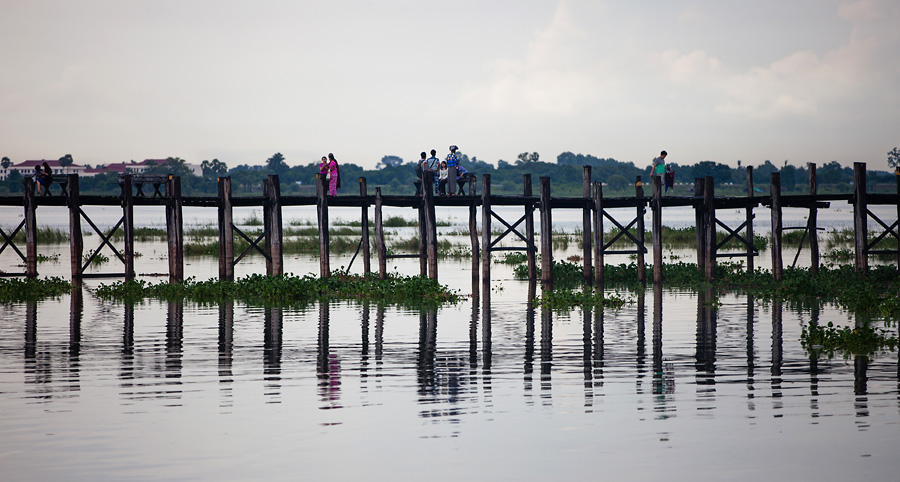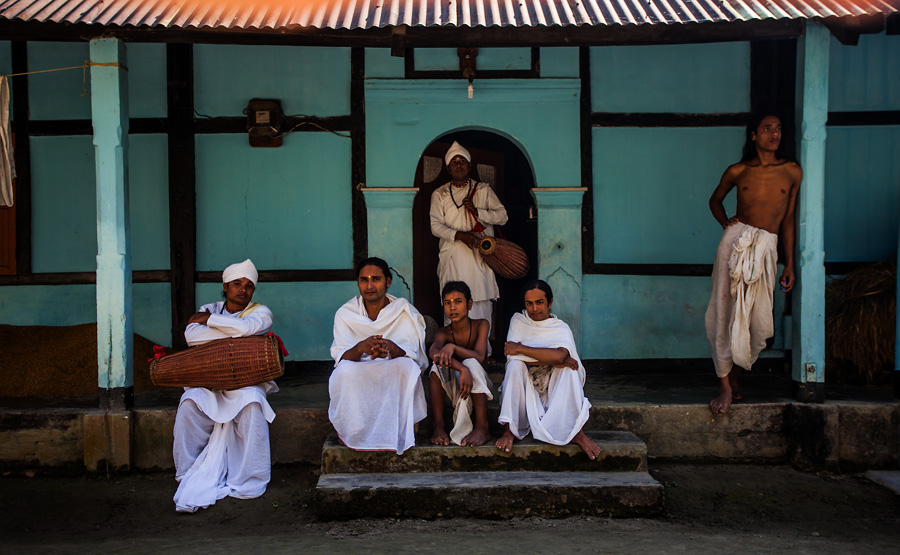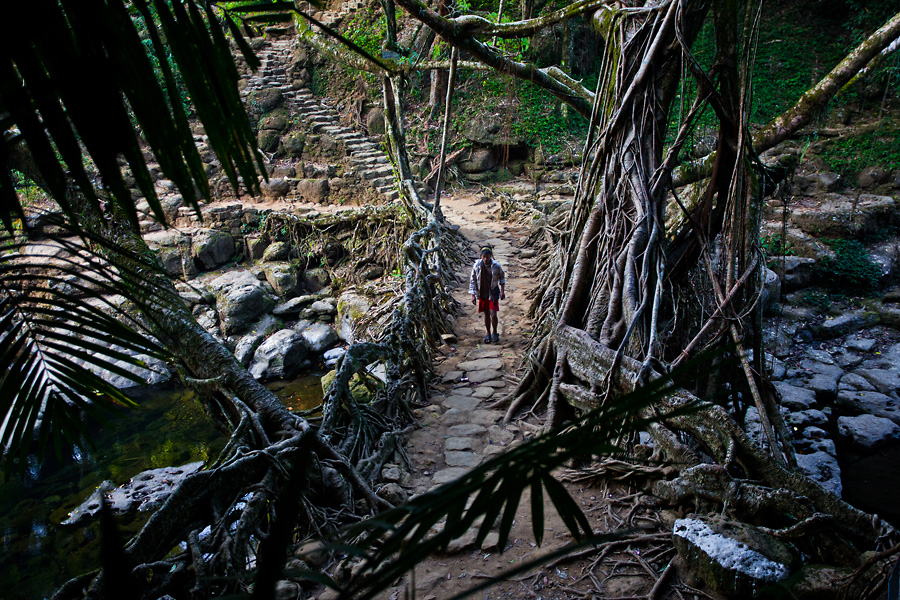Looking back at 2014 – Memorable Experiences in Images
 Here is wishing everyone a very happy 2015. May the new year bring you a lot of happiness, many exciting journeys and experiences that you will remember fondly.
Here is wishing everyone a very happy 2015. May the new year bring you a lot of happiness, many exciting journeys and experiences that you will remember fondly.
Looking back at the year that went by, it has been for me a year of many journeys and a diverse set of experiences. I started 2014 by travelling high in the Himalayas in bitter cold weather, experiencing temperatures as low as -25C in landscapes that are so beautiful that heart aches to leave them behind. On the contrast, I spent a month in the low-lands of Myanmar and Cambodia exploring some of the wettest regions of South East Asia. SEA charmed me with its vibrant cultural landscape–friendliest of smiles, genial monks, green carpets of rice paddies and a life that is still waking up to the rat-raced modern culture.
When it comes to cherished interactions, I spent time with shepherds of the highlands of Ladakh, lived with monks in high Himalayas of Himachal, gazed on air bubbles and crystalline formations in a frozen lake, interacted with farmers in rural Bhutan, picked sweet-peas in a Himalayas farm, watched the sun come up over a mirror-like calm lake amidst the mountains, sat in a carpet of wildflowers overlooking snow-peaks, watched ebullient young monks play joyfully with little concern for the world, flew on two brand new airlines that were born this year in India, enjoyed some beach-side holidays, sat pillion with great anxiety riding a two-wheeler on a train track, walked on the world’s longest teak-bridge which has an air of romance all over its length, made friends with a talkative monk, attempted to learn the heart of an elephant and felt the emotions of a caring mahout, flew on some tiny aircrafts and walked careless on a tiny airport tarmac, went on day-long boat journeys on rivers, met and chatted with the friendliest folks I have ever seen in the countrysides of South East Asia, witnessed nature’s slow and persistent dominance over man made edifices, lived in the remotest parts of India, got first hand insights into lives of people in the farthest parts of the country, watched an incredible event that is often dubbed as the ‘festival of festivals’, saw and learned how they make salt and spent the last few days of the year basking in some glorious sunrises and sunsets among gentle camel and colourful dancers in the deserts.
I couldn’t have asked more, but more did come my way. In the end of all these journeys, I came back a wee bit wiser, as people whom I encountered all along the way taught me a lesson unknowingly to them – that one doesn’t need all these experiences to be happy and yet, one must search and wander to learn this lesson.
—
Here is a collection of images and experiences I accumulated in the last twelve months.
In January 2014, I was travelling through Changthang Plateau in the highlands of Ladakh. It was a relatively mild winter, and yet, the evening hour temperatures were in the order of ten degrees below zero. Just before sunset, we arrived at a grassland coveted by ChangPa shepherds. It was time for the sheep and goats to return home from the day of grazing. A thousand or more of them kicked up dust from the parched land and until the air gathered the colour of earth. Last rays of the sun bounced off from the thick wooly hide of the sheep even when the setting sun was momentarily subdued by thick dust. The scene of a thousand sheep walking home in the evening light was an extraordinary moment.
In early summer, I travelled to a village where most people make a living tending to pachyderms. I spent a lot of time watching these elephants and trying to understand the emotion behind their tiny eyes, also exploring the beauty of a parent-child relationship between the man and his elephant.
I spent a few summer days travelling through the mountainous, urban and rural areas of the charming little mountain nation – Bhutan. It was a season between two crops. In some fields, people were harvesting the paddy while a few others were getting the land ready for the next season. We struck conversation with a few of them who were spreading manure on the ground. We didn’t speak each others’ language, but much information was exchanged with the help of a translator. I still owe them some prints, which will be delivered this summer when I go back.
Summer months continued to produce extraordinary experiences. I was in Spiti Valley in July, where I witnessed prolific efflorescence decorating the mountain landscapes. Flowers were everywhere, always in magical locations facing a deep valley, on the bank of a pristine lake or against snowy mountains.
My days in Spiti, where I spent about three weeks, continued to produce many memorable experiences. I spent a few days in a remote village overlooking a 20,000 feet high snow-peak, where people lived a spartan, laborious and yet happy life. Living with them and learning their way of life can be an enriching experience.
Subsequently, I spent a week in a monastery living, eating and working with the monks. I sat through the prayers, joined hands on the monastery’s tasks, participated in rituals and celebrations and even plucked sweet-peas in monastery’s field during the harvesting days.
One of the memorable times I had in the monastery was watching the kids play. They seemed to have an infinite supply of energy like I had never seen with anyone before. The monastery was at a high-altitude location where the air was thin and I struggled to walk up and down the sloping landscape. But thin air had little effect on these boys who grew up in the region. There was much excitement every evening as they shrieked and ran behind each other or chased a football, or played with a bat and ball when they were a bit spent.
As summer retreated, I made off to spend a month in South East Asia, travelling through Cambodia and Myanmar. In Cambodia, nature dominated what was once a man’s playground and place of artistic expression. Huge silk-cotton and ficus trees had taken over what was once temples of gigantic scale. Cambodia’s temples were grand, but natures control was final and complete.
During the days I was in Cambodia, I had the pleasure to interact closely with people of the country including monks, farmers, workers in the rural areas people who enable others to travel. The complex rituals I witnessed in the monasteries helped me understand the belief system, which follows Buddhist philosophy with traces of its Hindu past.
I also saw in Cambodia how people live on water, building their house on lakes–sometimes floating and sometimes on stilts–and living off the resources on water. Many of these are fishermen, but that’s not the end. As in any community, there are traders and service providers who are part of riverine habitat. These floating villages are not cut off from rest of the world, as every worldly amenity comes to their doorsteps. In these floating villages are schools, vegetable vendors and not surprisingly, boat makers. The downsides, I do not know about humans, but some families owned dogs that may not be very amused to be surrounded by water everywhere outside the house limits.
My next stopover was Myanmar, where I saw beauty and art in all creations of men from the past. U-Bein Bridge was one such work of art. On the outset, it appears to be a merely functional bridge across a lake, but one walk on its planks was enough to change my opinion. In the middle of the lake, it’s blue above and below with a stretch of wood breaking through an infinite blue. Half-way through it, there is a sense of floating in the middle of this blue expanse even as you watch young picnickers walking along, fishermen aiming for their catch and bicyclists going across with a small load. There is a sense of romance in every corner of the bridge.
Later, in the evening months of 2014, I was in Banaras for a week, my sixth visit to the city. I visit Banaras year-after-year, trying to understand its pulse and rhythm but never being successful at it. People have called Banaras many names–city of lights, city of joy, oldest living city and many many more names and adjectives. For me, the only qualifier till date for the city is that it’s an enigma. Perhaps I need many more visits before it ceases to be so or perhaps it will remain an enigma forever. Time alone can answer.
December was easily the most eventful month of the year for me. In the first half of the month, I travelled to the remote regions in North-East India. When I landed in Guwahati airport, I had no idea what I would be going through in the next fifteen days. I met some of the friendliest families in truly remote places and enjoyed their hospitality. I learned about the high-standards of community living set in the farthest corners of the region. This journey gave me many insights to a jewel of India that I knew little about in the past.
The last five days of my journey in North-East India was spent in a small village in a far corner facing Bangladesh. I spent these days understanding the community life and how the village-elders work in a structured and hierarchical manner to reign peace and goodwill within the village. The area around the village is well-known for its living root bridges, but seeing them was only a fringe benefit of being in the village.
From the far-eastern corners of the country, I flew to the far-western parts of the country and travelled through rural Rajasthan, enjoying the calm countryside, tasting some home made food cooked on wood-fire, chatting with local people and learning about some interesting crafts and vocations.
If you think that I was at some truly exotic place in the last few days of the year, it’s time for some anticlimax. I spent some time in the last week of December amidst thousands of revelling tourists and yet searching for things unique and interesting before returning to spend the last two days of the year at home.



